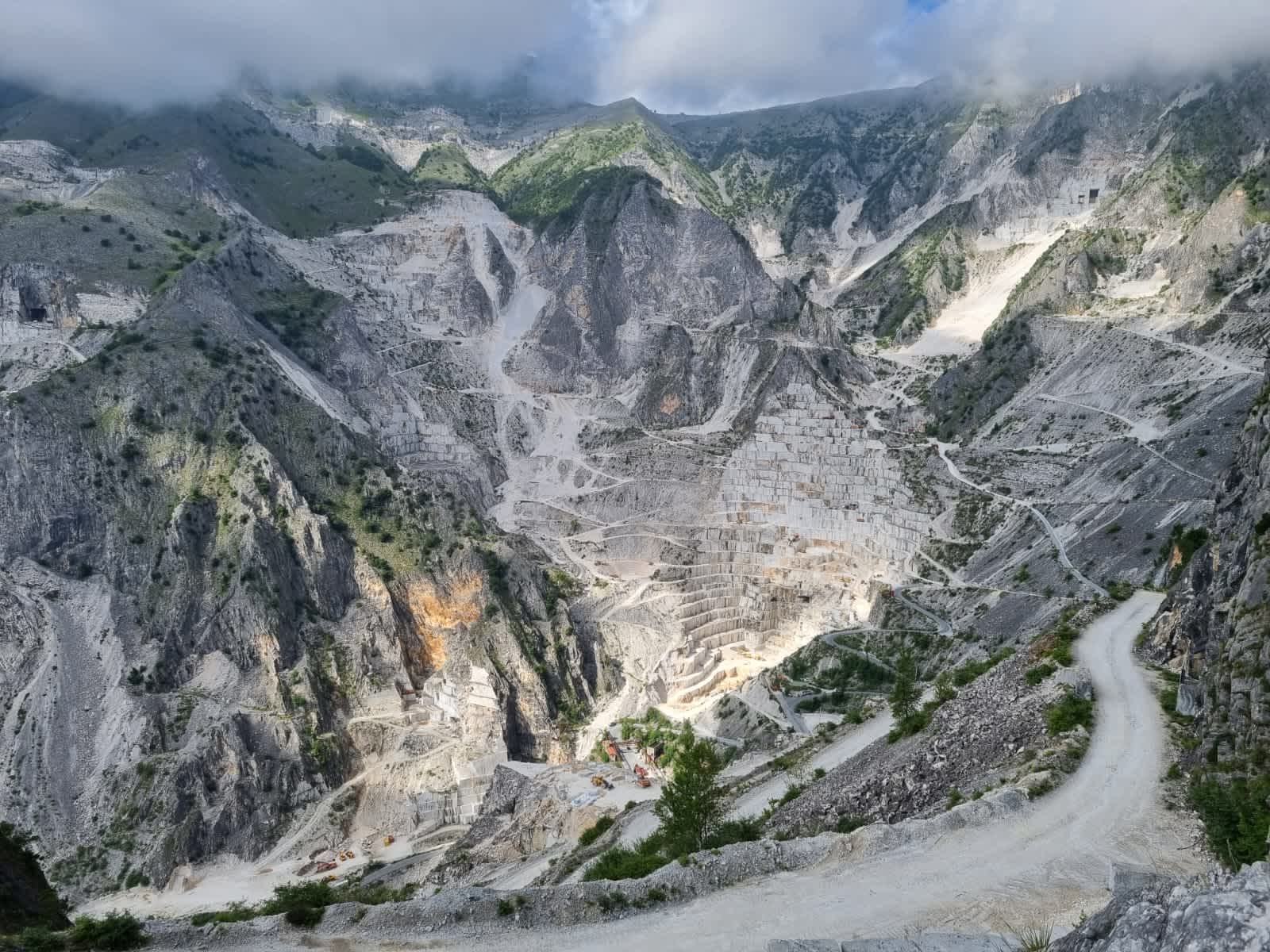
That touch of class: marble
The fascinating Carrara marble quarries hosted the third leg of the “Biesse On Tour Italy Edition”, interweaving nature, art, culture and design and starring marble, for centuries a symbol of elegance and refinement.
Marble is a material of exceptional beauty and prestige. Its great variety of forms, colors and nuances make it unique in all applications where elegance and refinement must emerge. And no better place than the Carrara quarries could Biesse have chosen to celebrate this material, exploring its different uses in art, architecture and design.
Unique and inimitable: marble.
Biesse On Tour Italy Edition is a series of itinerant events flying the banner of design and multi-materiality organized by Biesse, an international group that produces lines, machines and components to process materials into final products for various sectors, from wood to glass to marble and other natural stones to high-tech materials. This splendid journey into Italian excellence began last May 7 at the ADI Museum in Milan, one of the biggest European museums devoted to design, continuing on May 30 in Venice for a stop devoted to glass and arriving in Carrara, in the lovely framework of its quarries that recount a world famous history of centuries rich in nature, art, culture and design. The guideline for all the events is the challenges and opportunities awaiting the design world in the immediate future and above all the need for dialogue between industry leaders, united by a single common denominator that is sustainability, seen as a need to rethink production processes, limit waste and give preference to natural materials.
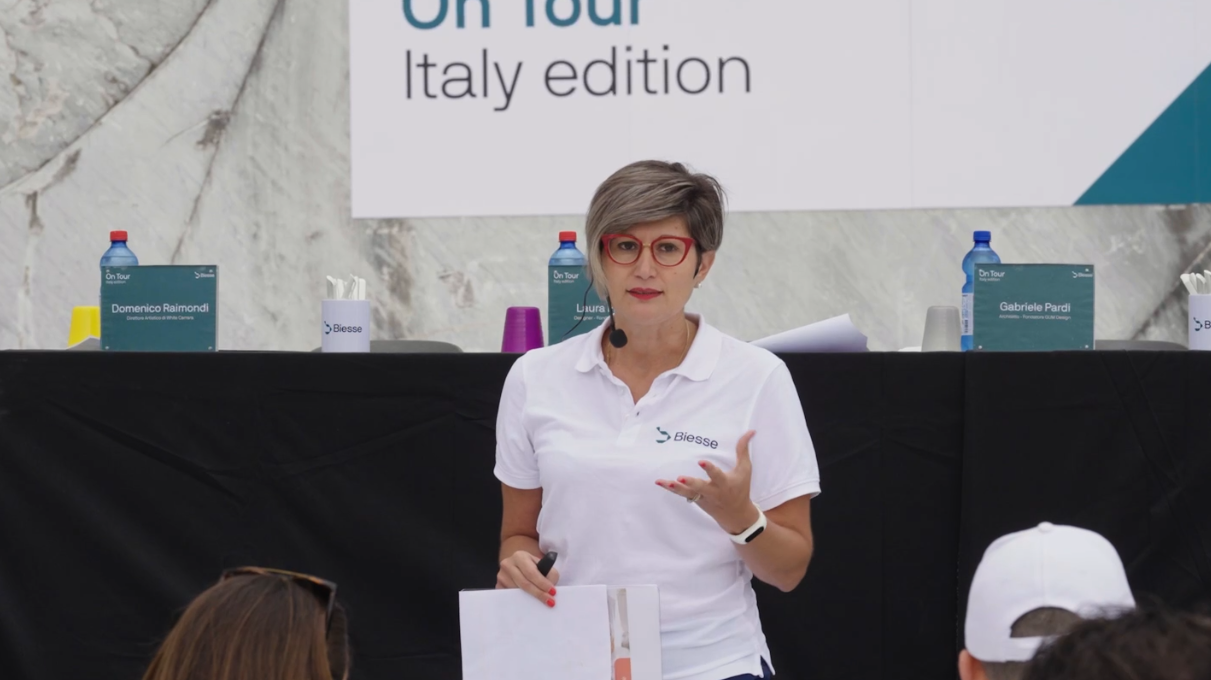
Laura Alesi, Biesse Marketing Manager for the Italian market, interviewed by Marmomacchine Magazine stated: “We wanted to organize an event that highlighted the skills of the various actors in the marble industry contributing to the creation of an excellent product. We also wanted to highlight the material itself as a fundamental focus of design. These presuppositions gave rise to the Biesse tour that, as well as marble, in its previous stops featured multimateriality and glass. We chose the Carrara quarries, among the many with similar allure, because they are probably the best-known internationally and because last year Carrara marble became one of the identifying assets of Italian heritage, while since 2017 the city of Carrara has been recognized by UNESCO as a “creative city”. And Biesse, while a company with Italian origins, has a highly global spirit well reflected in this place that is a site of Italian history and skill and of a material famous worldwide”.
Today marble and other natural stones are enjoying a second life, less tied to “classic” contexts, thanks to a combination of “historicalness” and “technological innovation” in which designers and architects open the doors to new applications that see marble as a star or co-star in unique and unrepeatable products. In this, technology - Biesse’s in particular - plays a fundamental role, providing numerical control machines making it possible to work slabs with great precision. Today the “digital stoneworker” is creating new scenarios in which shapes are created in an incredible way but also reducing work waste. For many stone companies, sustainability is by now their primary mission because working slabs without waste, reusing everything, including work dust, can be a way to pollute less and save on raw material while creating works of unique and inimitable design.
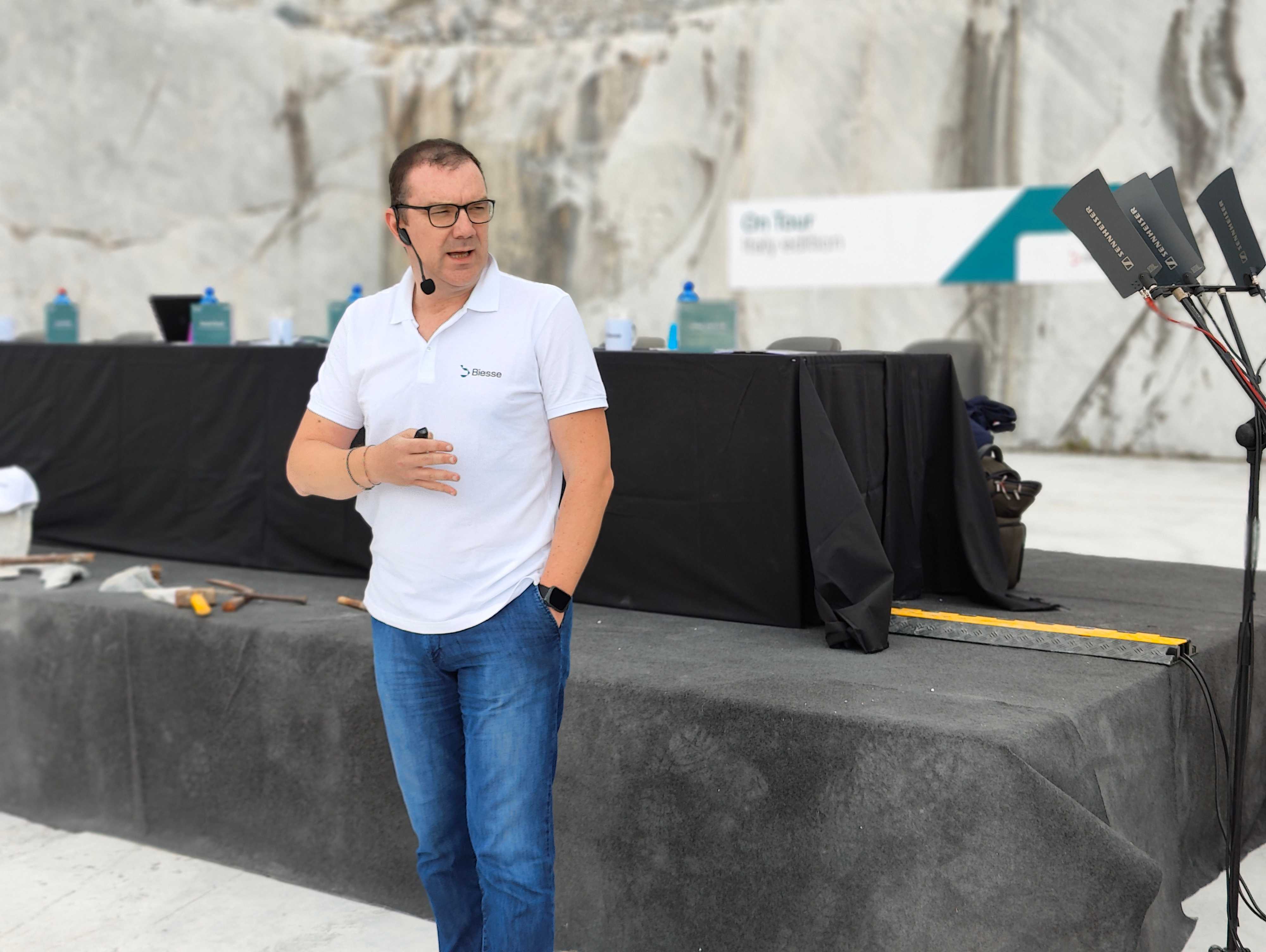
Omar Bertuzzo, Biesse Stone Sales Manager for the Italian market, adds his comments: “Technology should be seen as a tool for dialogue between the designer or architect and the maker of the piece as well as an element that democratizes design objects that can be replicated many times while retaining their uniqueness. Furthermore, our machines are increasingly user-friendly, since no skilled labor is required, making them more and more adaptable to the real needs of customers and small-scale designers”.
Precisely the comparison between nature and ingenuity was the focus of the round table in Carrara titled “Marble and Technology: nature and ingenuity compared” during which leaders of the business and academic worlds, who daily work and study this material, together with exponents of the worlds of design and architecture, discussed their love for this natural material which, thanks to its versatility and three-dimensionality, has through time gained ground and importance in the sector of occasional furnishings and objects.
MATERIAL, TECHNOLOGY AND ART: WORLDS THAT DIALOGUE
The mission of Biesse is well-known and was clearly reiterated during presentation of the June 14 event: “simplifying the production process for customers and stimulating their imagination to improve people’s daily lives”. Themes developed during the “Biesse On Tour Italy Edition” following two fundamental values: particularity and skill.
Particularity and skill that are blended as never before in observing the marvelous Carrara quarries, the natural and enchanting backdrop for the round table participated in by excellent speakers like Domenico Raimondi, White Carrara designer and art director, Laura Fiaschi, Gumdesign designer, Gabriele Pardi, Gumdesign architect, Ascanio Zocchi, interior designer and member of the ADI permanent observatory, Francesco Ferri, I Conci operations manager, and Duilio Signoretti, I Conci owner, skillfully moderated by Laura Alessi and Omar Betruzzo. A panel demonstrating, together with the previous legs of the tour, how the Biesse On Tour Italy Edition was inspired by Italian design culture and its ability to interpret materials and develop vanguard technological solutions attentive to sustainability that generate innovative products.
Stone House
In “Casa di Pietra” (“Stone House”), one of the events we organized to entice people to touch and caress the material, we used small formats where all the characteristics, the cuts and the discontinuities, become very important signs distinguishing every piece. To achieve this result we bet on the concept of ‘relation’: like people relate to one another, so materials should relate to one another. And so, for example, to the fragility of crystal we related the crystallization of marble and other stones”.
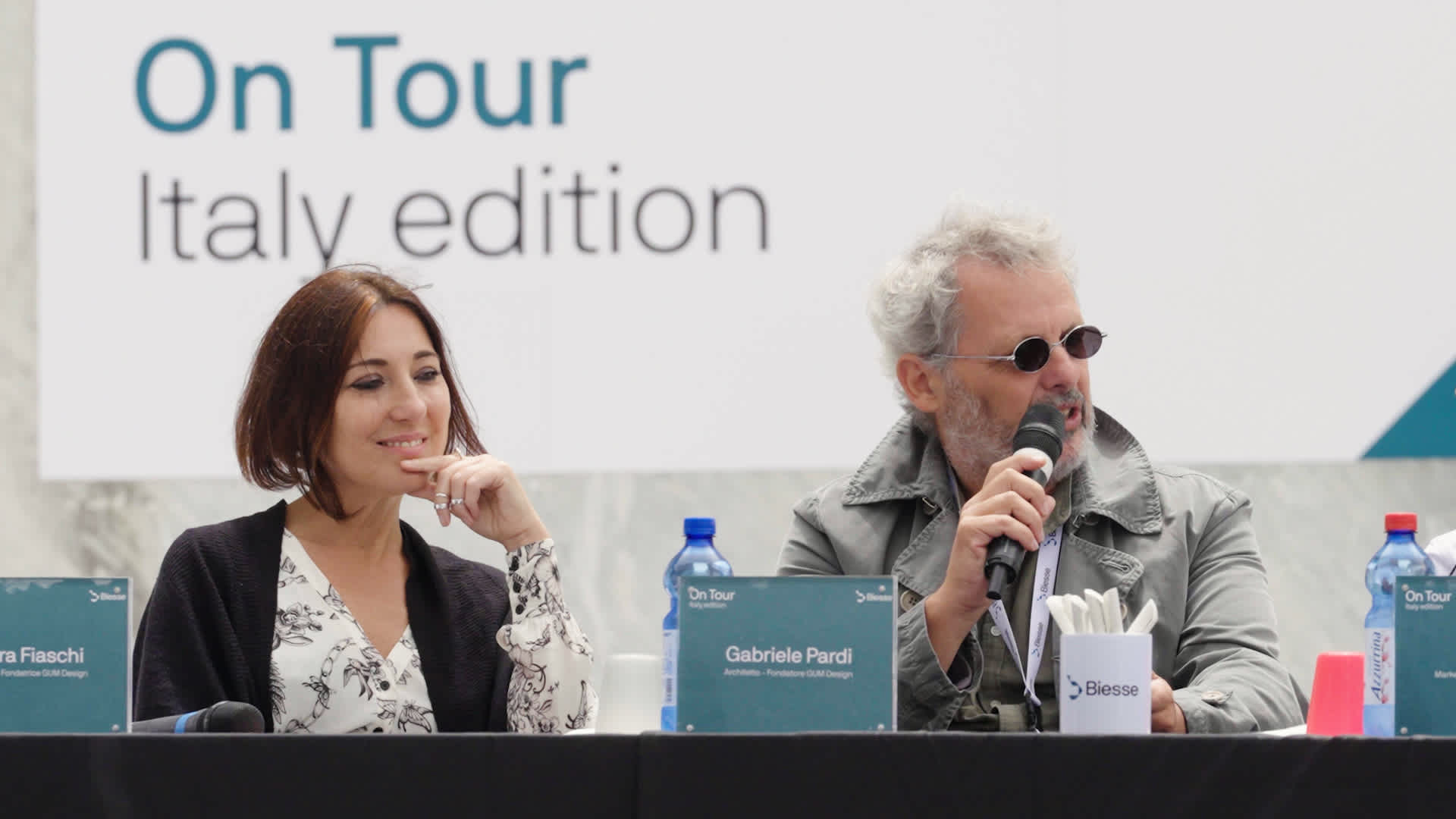
“This project – stated Gabriele Pardi – “began ten years ago thanks to a request from Marmomac to create a temporary installation at the show. Aldo Colonetti called it ‘kilometer zero’ not so much for the location of the materials but because it was handled totally by Gumdesign, from design to communication to distribution and final sales of the product. The Casa di Pietra was transformed from a cultural to a commercial product in a spontaneous way while retaining all the aspects that led to its creation, such as the cohesion of its participants, 47 artisans and companies from all over Italy. The truly singular aspect is that with this project we managed to create dialogue between marble workers and glass workers, developing exchanges of experiences and skills that led them to become friends”.
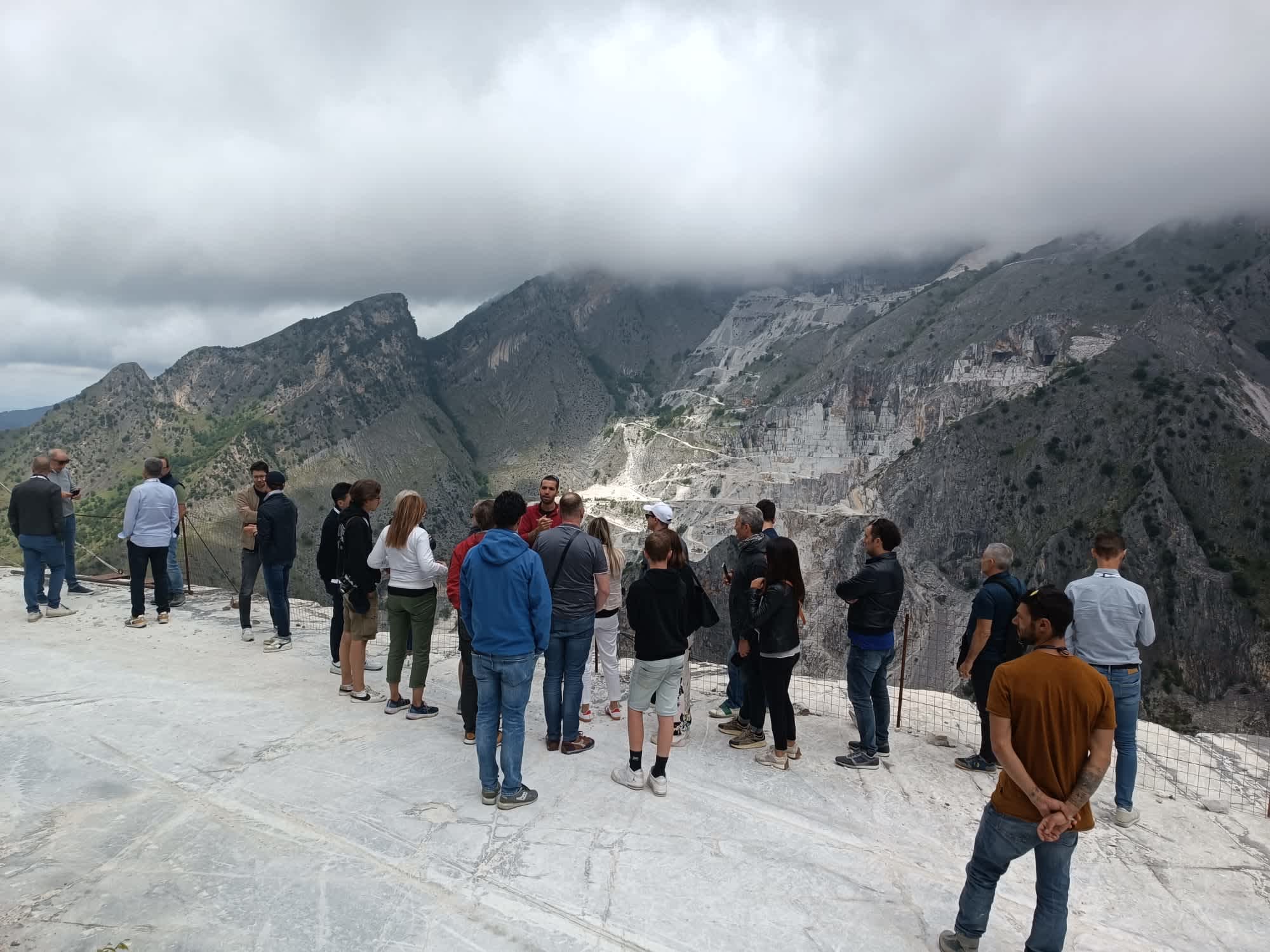
“There are some 90 Casa di Pietra collections, for a total of about 300 objects”, Laura Fiaschi went on to say. “Each collection tells a story, starting from the combination of two materials. The combinations of glass and marble, leather and marble or other natural stones, stems from fragments of memory. The Casa di Pietra has among its ingredients the union of these materials, making them dialogue together and at the same time telling a story reminiscent of fairy tales, stories handed down, situations of the past, traditions, sensations and emotions”.
“In the Casa di Pietra project”, Gabriele Pardi continues, “we always took the material into account, approaching it with the utmost sensitivity and working with small pieces, often discarded or set aside in workshops, and thinking about the durability of the objects created. From our little efforts came very important collaborations like that with Antonio Lupi Design, which led to the Gessati collection that uses so-called “tiles”, cheap flooring pieces abandoned in the workspaces of various ateliers. We thought that these pieces could be ennobled with a new production method. So essentially they are combined horizontally, vertically or radially and united with bi-component resins to regenerate a small block composed of 10x45 cm tiles. Our aim is to transfer this sensitivity to those who work with, make and distribute these products throughout the world”.
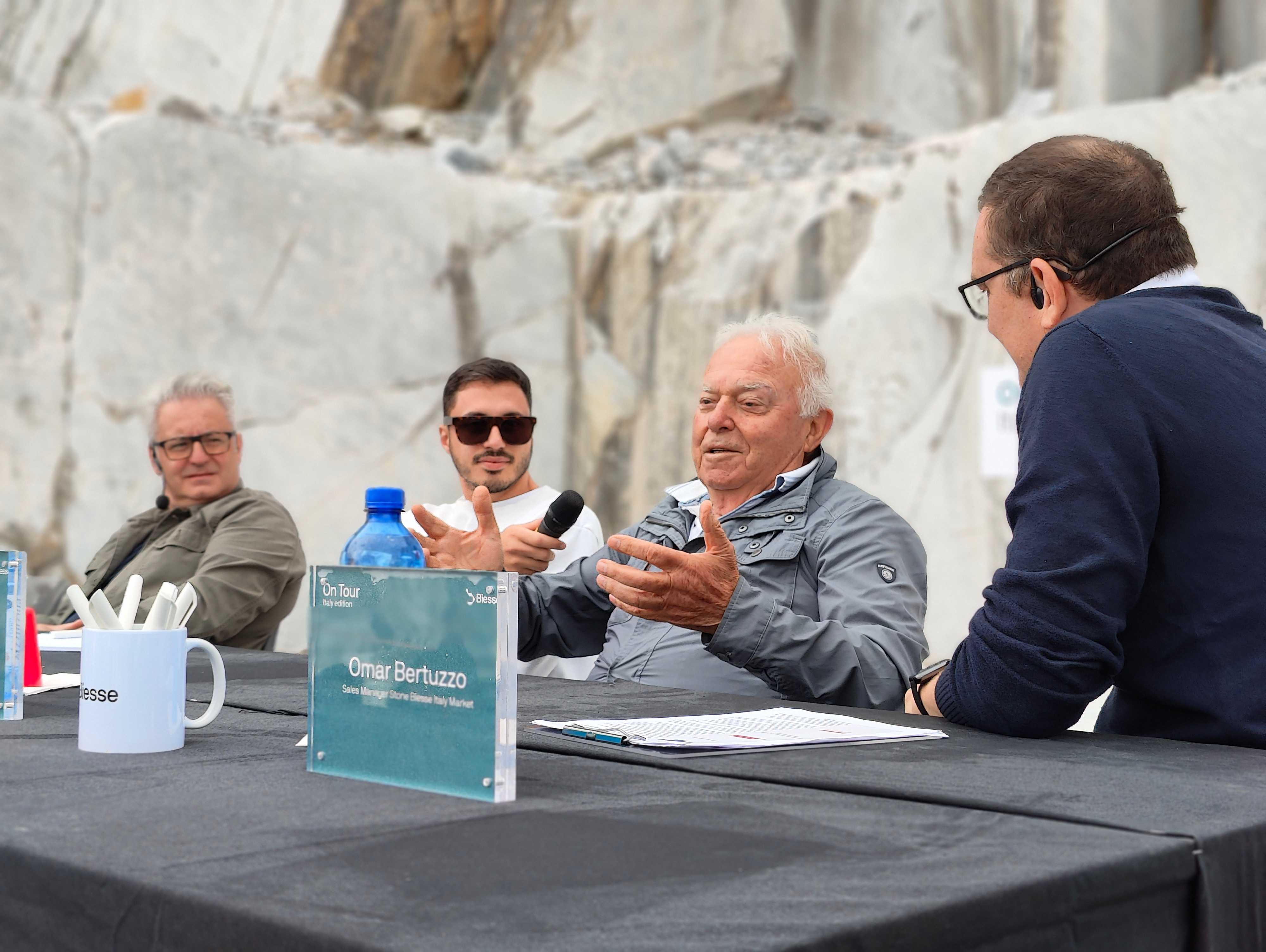
The material is able to speak a technological language poetically, to be translated into soft or rigid, irregular or smoothed shapes. Color, shape, elegance and harmony achieved through the naturalness of marble are the basis for the collections from I Conci, a company in Fano, in the Pesaro Urbino province.
From its own quarries in Ascoli Piceno it produces S. Catarina travertine.“This is one of the materials preferred in building thanks to its particular hardness and endurance through time”, says Francesco Ferri. “In our quarry there is a portion of travertine more porous than is normal and considered absolutely unsuitable for use in building. Following the concept of sustainability and of promoting everything that is beautiful about stone, our company is greatly committed to ‘illuminating’ this waste material, giving it new life and making its defect of excessive porosity an asset”. The way the material was “illuminated” is explained by Duilio Signoretti, with 65 years of experience in stone-working. “Simply shining a cellphone flashlight behind a thin slab of this overly porous travertine we were amazed by the beautiful effect of the light filtering through the pores of the material. The upshot is that today this kind of travertine that we use for our design collections is more prized than the type used for building. Obviously, a big contribution to the development of our products came from technological innovation, which continues to progress thanks to constant dialogue between machine makers and stone workers, as in our case”.